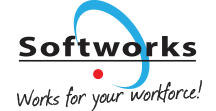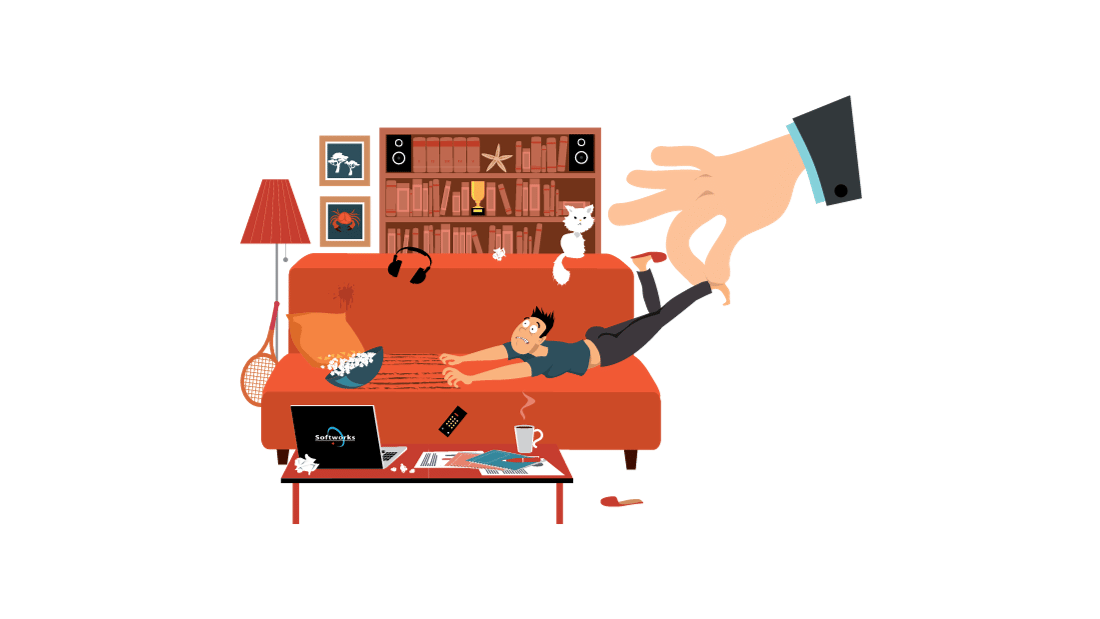As we transition back to work following the festive cheer of the Christmas holidays, many of us face the daunting task of adjusting to our professional routines. The transition from the relaxed holiday atmosphere back to the structured world of deadlines, meetings, and productivity can be challenging. For some, it might feel like being plunged into cold water after basking in the warm sun.
The holidays often disrupt our regular schedules, altering our sleep patterns, eating habits, and daily routines. This disruption, while enjoyable during the festive season, can leave us feeling out of sync when it’s time to return to work. Additionally, the emotional toll of leaving behind family gatherings and the festive spirit can impact our motivation and focus.
Recognizing and addressing these challenges is crucial for a smooth transition back to work. It’s not just about hitting the ground running; it’s about ensuring that our return is sustainable, healthy, and productive. A well-managed transition can significantly impact our overall well-being, job satisfaction, and efficiency.
Here are the 12 practical tips to help you navigate this transition with ease, enabling you to start the new year on a positive and productive note.
TABLE OF CONTENTS
Tip 1: Reset Your Sleep Schedule
Resetting your sleep schedule is a vital step in readjusting to your work routine post-holidays. The festive season often disrupts our normal sleep patterns, leading to sleep deprivation which can negatively affect mood, cognitive function, and overall health.

Establish a regular sleep pattern by going to bed and waking up at the same time every day, weekends included. This consistency regulates your circadian rhythm, improving sleep quality.
Inadequate sleep can diminish concentration, memory, and overall work performance, and impact interactions with colleagues and clients. Therefore, a healthy sleep schedule is crucial for both personal well-being and professional efficiency.
To aid this adjustment, create a relaxing bedtime routine. Reduce screen time before bed and engage in calming activities like reading or meditation. Quality sleep is as important as quantity, ensuring you’re well-rested and ready to tackle the day with energy and focus.
Tip 2: Plan Your First Week Back
After a delightful holiday season, diving back into the work routine can feel like navigating through a maze of tasks and responsibilities. A well-organized plan for your first week can be your roadmap to a smooth transition.

Here are some steps to help you structure your approach:
- Make a List of Tasks: Start by listing all the tasks that await you. This could include responding to emails, project tasks, meetings, and any other pending work.
- Break Them Down into Parts: Divide larger tasks into smaller, more manageable steps. This approach makes daunting tasks seem more approachable and less overwhelming.
- Prioritize Your Tasks: Categorize your tasks based on their urgency and importance. Determine which tasks require immediate attention, which can be scheduled for later in the week, and which ones can wait.
- Set Realistic Goals: Define clear and achievable goals for the week. Ensure these goals are reasonable, considering the time needed to readjust after the holidays. For instance, aim to clear urgent emails by a certain day or make progress on a key project by the week’s end.
- Use Digital Tools for Organization: Employ digital tools like calendars and to-do list apps to keep track of your tasks and deadlines. These tools are instrumental in keeping you organized and on track.
- Share Your Plan: Communicate your weekly plan with a colleague or supervisor. This keeps you accountable and also helps your team understand your priorities and how they can support you.
Remember, the aim is not to pack your first week with an excessive workload but to create a structured approach that helps you ease back into your work rhythm. By following these steps, you can find the right balance between being productive and giving yourself the space to readjust, setting a positive tone for the year ahead.
Tip 3: Prioritize Your Tasks
Building on the foundation laid in Tip 2, where you planned your first week back, the next crucial step is to effectively prioritize your tasks. Proper prioritization ensures that you focus on what is most important and urgent, leading to more efficient task management.

Here are the steps you can follow:
- Use the Eisenhower Matrix: This time-management tool helps you categorize tasks based on their urgency and importance. Tasks are divided into four quadrants: Urgent and Important, Important but Not Urgent, Urgent but Not Important, and Neither Urgent nor Important. This classification aids in deciding which tasks to tackle first, schedule for later, delegate, or even drop.
- Assess the Impact and Effort: Evaluate each task based on the impact it will have and the effort it requires. Focus first on high-impact, low-effort tasks, as these often yield significant results with minimal resource expenditure. Save high-effort tasks for when you have more time and energy.
- Consider Deadlines and Commitments: Pay close attention to any looming deadlines or commitments. Tasks with approaching deadlines should generally be prioritized to avoid last-minute rushes and stress.
- Factor in Dependencies: Some tasks might be dependent on others. Identify these dependencies to ensure you complete tasks in a logical order. This prevents bottlenecks and ensures a smoother workflow.
- Review and Adjust Daily: At the end of each day, review your task list and adjust the priorities as needed. This daily review helps you stay flexible and responsive to any new tasks or changes in existing ones.
- Stay Realistic: While prioritizing, it’s essential to remain realistic about what can be achieved in a given timeframe. Avoid overcommitting and remember that it’s okay to reschedule or delegate tasks when necessary.
By effectively prioritizing your tasks, you can maximize your productivity and ensure that your energy is spent on tasks that offer the greatest benefits. This approach is not just about working hard but working smart, especially as you transition back into your work routine after the holidays.
Tip 4: Set Realistic Goals
When getting back to work after the holidays, setting realistic goals is crucial to avoid feeling overwhelmed. Understand that your productivity might vary initially, so set goals in line with your current pace, not your peak performance.

Make your goals specific and measurable for clarity and direction. For example, instead of a vague goal like “work on the report,” aim to complete a specific section by a certain date. Breaking larger goals into smaller tasks can make them more achievable and less daunting.
Be flexible with your goals, ready to adjust them as needed. This adaptability is especially important post-holidays as you’re readjusting to your work rhythm.
Don’t forget to balance professional objectives with personal well-being goals, such as taking regular breaks or scheduling relaxation time. This balance is key for maintaining both productivity and health.
Setting realistic goals helps create a sustainable, successful path in your work routine, acknowledging your current capabilities and ensuring a positive, effective return to work.
Tip 5: Reconnect with Colleagues
As you return to work after the holidays, remember that rekindling connections with colleagues is as crucial as diving back into tasks. These relationships form the foundation of a productive and harmonious work environment.

Start with casual conversations about holiday experiences or plans for the new year, creating a relaxed atmosphere that goes beyond just work-related topics. These interactions help ease the transition back into the workplace and foster a more connected mindset.
Consider organizing a team meeting or an informal catch-up. These gatherings provide a perfect platform for realigning post-holiday, allowing everyone to update each other on work and personal levels, thus reinforcing camaraderie and teamwork. Be supportive of those who might find the adjustment challenging. A simple gesture of help or listening can greatly strengthen workplace bonds.
Additionally, acknowledging each team member’s contributions during such times cultivates a culture of respect and collaboration. Engaging in team-building activities, whether simple in-office initiatives or more elaborate events, further enhances these connections. They are not just about having fun but about reinforcing team dynamics and building deeper, more meaningful relationships.
In essence, nurturing these workplace relationships is key as you navigate back into your work routine. It transforms the office from just a place of work to a space where you belong and thrive.
Tip 6: Update Your Workspace
Revitalizing your workspace is a simple yet effective way to kickstart your return to work after the holidays. A tidy, organized environment can significantly enhance your focus and productivity.

Begin with decluttering. Remove unnecessary items, organize your documents, and tidy up your digital space. This not only creates physical room but also aids in mental clarity, allowing you to concentrate better on your tasks.
Consider rearranging your workspace for a change of scenery. Adjusting your furniture or adding new decor can refresh your environment and boost your mood.
Pay attention to ergonomics. Ensure your chair, desk, and computer are set up for comfort and posture support, as this can impact your health and productivity in the long run.
Finally, add a personal touch. Whether it’s photos, plants, or motivational quotes, personalizing your space can make it more inviting and inspiring, fostering a positive work atmosphere.
A refreshed workspace sets the stage for a productive and enjoyable work experience, helping you start the new year on a high note.
Tip 7: Ease Back Into Your Routine
After the holidays, it’s important to ease back into your work routine gradually instead of rushing into it. The transition from a relaxed holiday mode to a structured work environment can be jarring, and giving yourself time to adjust can make a significant difference.

Start by setting manageable tasks for yourself and avoid overloading your schedule in the first few days. This gradual approach helps you build momentum without feeling overwhelmed. It’s about finding a balance between being productive and giving yourself the space to readjust.
Also, take breaks when needed. Short breaks throughout the day can help maintain your energy levels and prevent burnout. Remember, it’s a marathon, not a sprint. The goal is to reintegrate into your work routine sustainably and effectively, ensuring a positive start to the post-holiday period.
Tip 8: Take Care of Your Health
As you get back into your work routine, taking care of your health is crucial. The holiday season often leads to changes in diet and exercise routines, so it’s important to reestablish healthy habits.

Focus on a balanced diet that fuels your body and mind for work. Incorporate a variety of nutritious foods, and try to limit the intake of processed and high-sugar items that can lead to energy crashes.
Regular exercise is also key. It not only improves physical health but also boosts mental well-being, concentration, and stress management. Even simple activities like a daily walk or a short stretching session can have significant benefits.
Don’t forget about hydration. Drinking enough water throughout the day is essential for maintaining energy levels and cognitive function.
Prioritizing your physical health with good nutrition, regular exercise, and hydration contributes greatly to your overall productivity and well-being as you transition back to work.
Tip 9: Practice Mindfulness and Stress Management
As you readjust to your work routine, it’s important to incorporate mindfulness and stress management techniques into your daily schedule. These practices can significantly reduce stress levels, improve focus, and enhance overall well-being.

Meditation is a powerful tool for mindfulness. Even a few minutes of meditation each day can help clear your mind, reduce anxiety, and improve your concentration. There are various forms of meditation, so you can explore and find one that works best for you, such as guided meditation or breathing exercises.
Brief walks, especially outdoors, can also be very effective in managing stress. They provide a change of scenery, a break from the work environment, and a chance to get some fresh air and physical activity. Walking helps in clearing your mind and can boost creativity and problem-solving skills.
Incorporating these techniques into your daily routine helps in managing stress and maintaining mental clarity, making your transition back to work smoother and more productive.
Tip 10: Use Productivity Tools
As you get back to work after the holidays, leveraging productivity tools and software can be a game-changer in managing your workload efficiently. These tools play a crucial role in organizing tasks, setting priorities, and keeping track of deadlines, ultimately streamlining your work process.

From task management apps to calendar tools, these resources help you visualize your workload and plan your days more effectively. They can assist in breaking down larger projects into manageable tasks and setting reminders for important deadlines.
Incorporating these tools into your daily routine not only helps in staying organized but also reduces the mental load of trying to remember every detail and deadline. By efficiently managing your tasks with the aid of these tools, you can focus more on the work itself, leading to higher productivity and less stress.
Tip 11: Seek Feedback and Support
As you navigate back to work post-holidays, don’t underestimate the importance of seeking feedback and support from your managers or colleagues. This step is crucial for a smooth transition and effective performance.

Reaching out for feedback can provide valuable insights into your work and help you understand areas of improvement or success. It also shows your commitment to continuous learning and growth.
Support from colleagues or supervisors can be instrumental in overcoming challenges or roadblocks you might face. Whether it’s guidance on a project, help with managing workload, or simply a sounding board for ideas, this support system is essential.
Remember, seeking help is not a sign of weakness, but rather a demonstration of your willingness to learn and adapt. It fosters a collaborative work environment and contributes to your professional development.
Tip 12: Celebrate Small Wins
As you get back into the swing of things at work after the holidays, it’s important to recognize and celebrate small wins. Acknowledging these achievements, no matter how minor they may seem, plays a significant role in boosting morale and maintaining a positive outlook.

Celebrating small wins helps to create a sense of progress and accomplishment. It can be as simple as completing a challenging task, having a productive meeting, or receiving positive feedback. Recognizing these moments not only boosts your morale but can also inspire and motivate your colleagues.
Create a habit of reflecting on your daily or weekly achievements and take a moment to appreciate them. Share these successes with your team as well, as this can foster a culture of appreciation and collective achievement.
Remember, every big goal is achieved through a series of small steps. By celebrating these smaller milestones, you reinforce your path to larger successes and create a more fulfilling and encouraging work environment as you transition back to your routine post-holidays.
Conclusion
As we wrap up our journey through these tips for returning to work after the holiday season, it’s important to approach this transition with both positivity and preparedness. From resetting your sleep schedule to embracing the importance of small wins, each tip is designed to help you smoothly reintegrate into your work routine.
Remember, the key is to ease back into your routine gradually, prioritize your tasks, set realistic goals, and most importantly, take care of your health – both physical and mental. Reconnecting with colleagues, updating your workspace, and utilizing productivity tools can also significantly enhance your work experience.
As you implement these strategies, stay open to seeking feedback and support from your peers and supervisors. This collaborative spirit not only eases your transition but also strengthens your work community.
We hope these tips provide you with a roadmap for a positive and productive start to the year.
We’d love to hear from you! Please comment below. Share your experiences, insights, or any additional tips you have for getting back into the work groove after the holidays.
About Tomislav Rucevic
Tomislav Rucevic, an SEO Specialist at Softworks, stands out as more than just a marketer. He’s a fervent writer and influential thinker passionate about Workforce Management, HR, and work-life dynamics. Holding an MBA in Marketing, Tomislav excels in creating content that delves into the complexities of the modern workplace.
His dedication to writing on these topics is highlighted in his MBA thesis, which examined the link between Employee Motivation and Quality Improvement. At Softworks, he expertly merges his SEO skills with his writing prowess, contributing to the company’s digital success and advancing discussions on enhancing work environments and achieving work-life balance.









